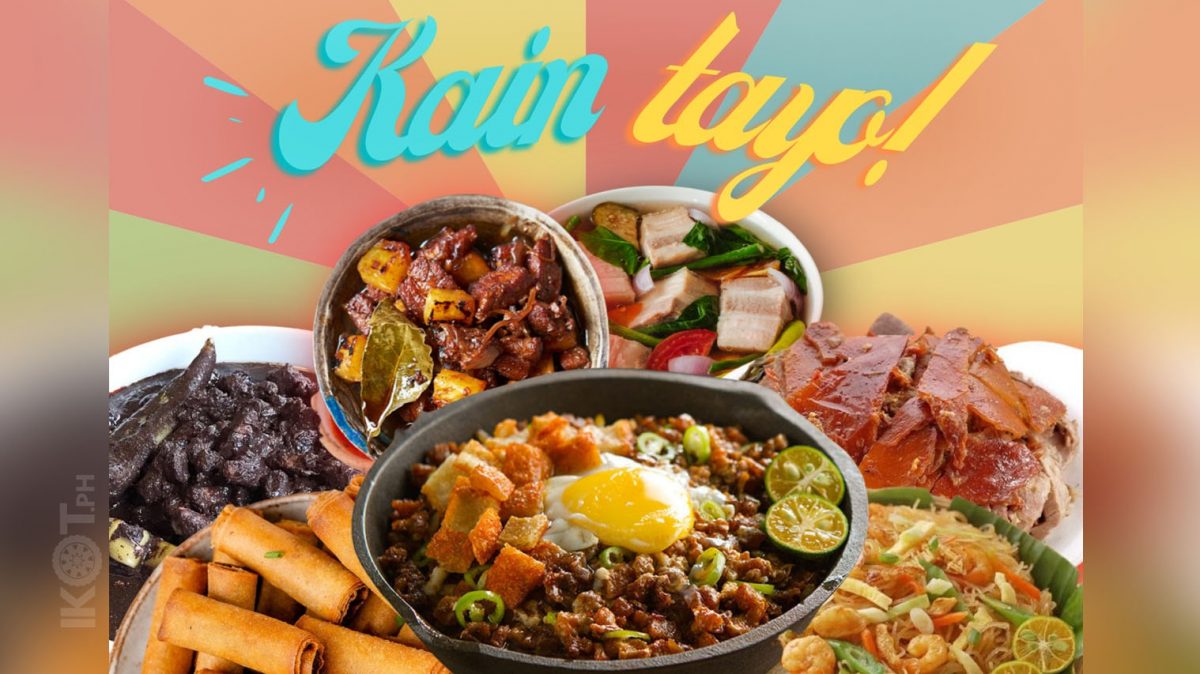If the food we eat is what we are, then who are we? Filipino cuisine has been around for centuries. It went through several changes of the seasons and colonial influence. These are evident in every food we serve on the table today. But when it comes down to it, what does our food really say about us as a nation?
It took us a few countries’ occupations in our lands to mold our traditional cuisine, tame our palates, and gain new means and habits of preparing food. From the early trades of spices and cooking styles with China, the usage of cutlery through the Spanish occupation, up to the culture of fast food meals during the US colonial era, we have come a long way in creating food that is genuinely Pinoy; whether it be with our way of cooking or the ingredients used.
How are cuisines created?
The cultural significance of culinary traditions is vital in understanding a nation’s roots and identity. Cuisines are usually dependent on a country’s climate. Since planting is the key source of our produce, food is created based on the available ingredients. One of the many reasons why some common and traditional food in one country is nearly never prepared in another.
Since trading is a huge part of a civilization, one culture gets mixed with others, either through the exchange of goods and products or, if by force, colonization. The Philippines experienced both. Our early trades between Indo-Malaysia and other neighboring countries gave us spices and new means of cooking. When Magellan reached our shores, he brought the three Cs: Catholicism, culture, and cuisine. Food was used as a weapon by our ancestors as a sign of peaceful resistance. Early Filipinos would refuse to plant rice to starve our colonizers in the hopes of them leaving our land.
Filipino Cuisine

It’s an understatement to say that Filipinos love food. Pick up a Filipino cookbook and check the serving size per meal; they usually say “serving two or more.” This is one of the many traits of Filipino cuisine – it’s best when shared. Filipinos have the simplest to weirdest of meals. When one gets sick, there is Goto, Mami, Bulalo, and a whole lot more. Into the extremes? Balut, Chicharon Bulaklak, and Dinuguan are waving. But none of them embodies the culture and heritage of the country. They are either influenced by other nations, or the preparation is downright stomach-churning.
Even the world-famous spit-roasted pig or Lechon is not innate in the Philippines, so we can’t claim it. However, there are multiple possibilities here. Its very name is Spanish for pig, so it’s possible that Spanish colonizers also brought it. We might need to change it to Four Cs now since Lechon resembles Spain’s Cochinillo Asado. But it’s also possible that when creating fire became a thing for our ancestors; they likely learned to put pigs on fire for a palatable experience. Other Southeast Asians also have their versions of Lechon.
Lumpia apologists would try to appeal, but no, Lumpia came from Chinese migrants, hence the name Lumpiang Shanghai. They either call it Spring or Egg rolls. The same thing can be said about Pancit. The very concept of stir-frying came, too, from our Chinese neighbors. So, now that Lechon, Lumpia, and Pancit are out, three dishes might go head-to-head as our country’s representative dish.
Pre-colonial lineage

A tropical country with mostly warm climates would have to create ways of preparing and storing food. We mentioned how climate plays an important role in the development of cuisine. Even before the Spaniards set foot in the country, early Filipinos have already found means of preparing food, one of which is Adobo. A representative dish that has been around longer than most of the dishes we now know.
Whether it be pork, chicken, beef, or even fish; with egg or potatoes, this vinegar-based stew has versions that could equal the number of islands in the country as each region almost always have their version of Adobo. While the name Adobo is derived from the Spanish word Adobar which means either marinade or seasoning, it is believed that the dish was already around before the influence of other countries.
It has already gained popularity in other countries and even earned praises from celebrities like Meghan Markle and Drew Barrymore. Adobo is a truly Pinoy food that could continuously battle with the next stew.
Stewmulating bowl of warmth and comfort

Sour, soothing, present everywhere, and can be prepared with almost all kinds of meat. If there is a dish that can battle the origin and indigeneity of Adobo, it’s Sinigang. While it would be difficult to find early references for this flavorful dish, it is also thought to be one of the oldest dishes prepared by early Filipinos.
Like Adobo, Sinigang also has different versions and ways of being prepared, depending on where you are in the country. Some would use guava leaves, while others use gabi, calamansi, or most commonly, Tamarind. Since Tamarind originated from Central America, some would argue that Sinigang, like Adobo, is also influenced by other nations.
Sinigang is home and comfort for some, a dish that reminds them of either the taste of youth or home. But like Adobo, can these two dishes be the perfect representation of our culture and heritage? A fairly young dish would like to contest with blazing enthusiasm.
A sizzling plate of international standards

When the Philippines was ceded to the United States by Spain, they set up camps in the North, in Angeles City, Pampanga, to be exact – where Clark Air Base was established. Since pig’s head is not something Americans are accustomed to eating, they’d throw the pig’s head. Lucia Cunanan or Aling Lucing, the so-called Queen of Sisig, found it such a waste, so she decided to use the scraps for the dish. She said she just accidentally reinvented the dish when she burnt a pig’s ear. True to its Filipino roots of not wasting things, she added it to the modern version of Sisig, conquering the region and the entire country.
With the Sisig craze reaching every shore of the archipelago, the international crowd eventually took notice. Sisig won several awards in the US and other countries. A Filipino-American chef recently bagged the championship in a cooking show in the US featuring Sisig. In 2017, Anthony Bourdain said that the Sisig would win the minds and the hearts of the world. Good on ya! Maverick food porn poet!
So, Sisig. We mentioned earlier that cuisines are created through influence but this one? Truly Pinoy! It symbolizes Filipinos’ knack for making things out of nothing – turning garbage into gold. Sisig is gold, and it will soon enough make more noise on the international stage.
So, who are we as food?
But this could be it? Could Sisig be the ultimate Filipino dish? It could be. Food, cuisines evolve. We create new ones. To answer the hanging question, who are we as a nation if we are food? Maybe there is no definite answer… yet. But we now know that when it comes to Filipino food, the main goal is to feed. Our food brings warmth and good memories, which then ties us to our family and ancestry. We pass on recipes from one generation to another. We ride the tide and make use of what we have.
Filipino cuisine speaks of our history and heritage, for some, it might not have its own identity, but maybe they just don’t see that what lands on their plates aren’t made out of a mix of ingredients and spices; they are symbols of what this nation had gone through, and despite the challenges, we still manage to offer and feed – after all, that’s what our food is created for.


